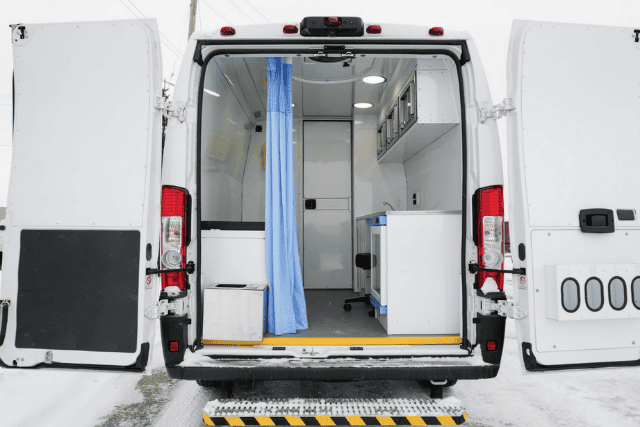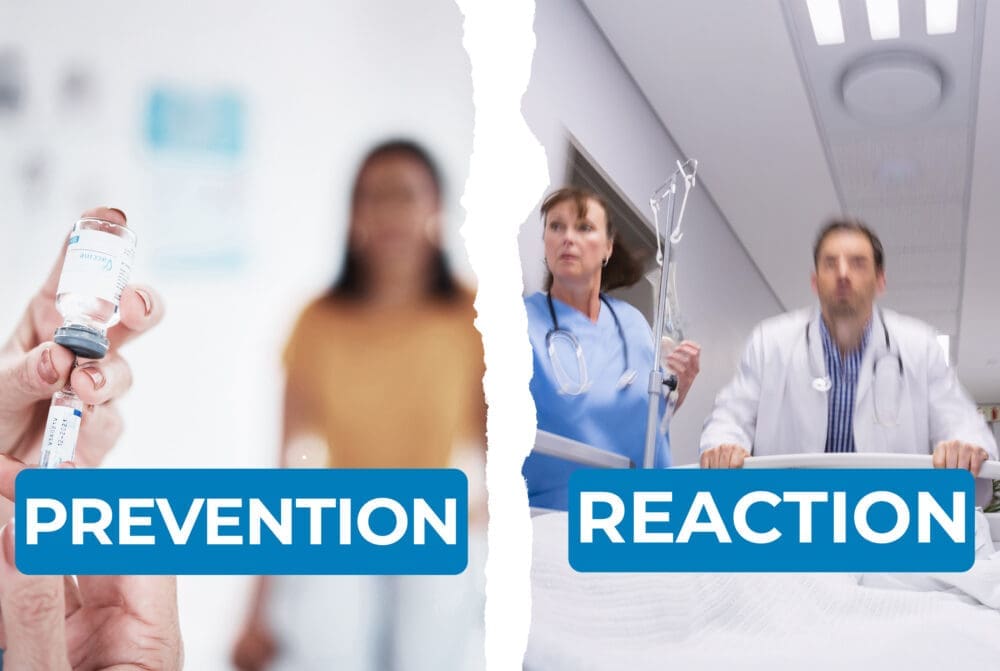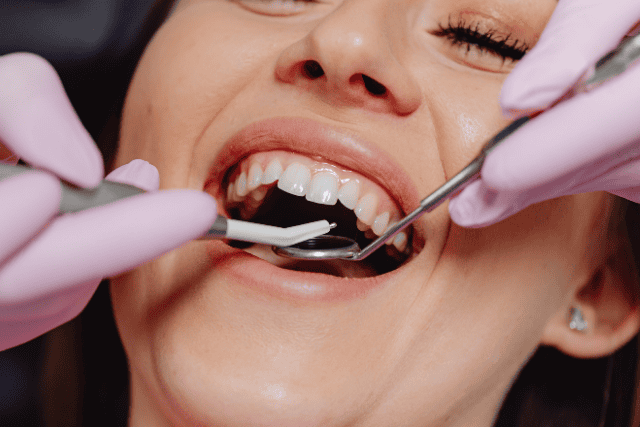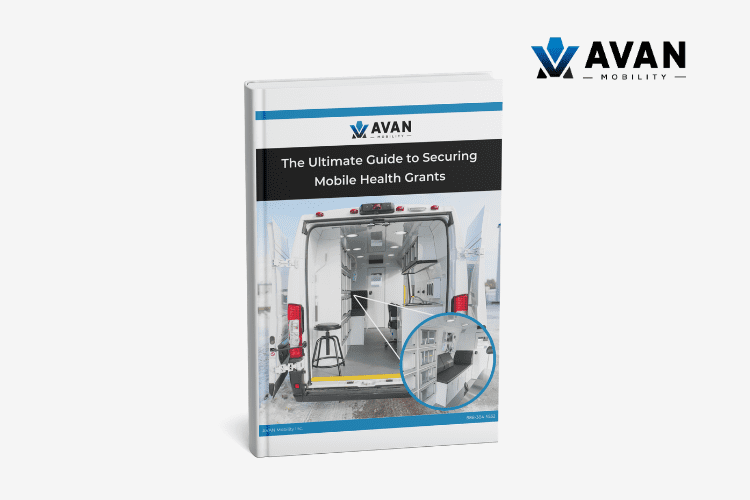Has your organization ever wondered how to best tackle the opioid crisis? If so, you might find yourself caught between the options of a mobile overdose prevention site vs. harm reduction center. Without clearly knowing how to approach this, your organization might misallocate resources, and the impact of this crisis on communities will only continue and worsen.
At AVAN Mobility, we manufacture mobile medical vans so organizations just like yours can save lives across the U.S. With over a decade of experience, we’re breaking down barriers to healthcare and reaching every corner of the country. Our mission? Making healthcare more accessible, one friendly van at a time.
In this article, we’ll explore the differences between mobile overdose prevention sites vs. harm reduction centers. By the end of reading, you’ll have a clearer understanding of which option suits your organization best.
What are mobile overdose prevention sites?
Mobile overdose prevention sites (OPS) are helpful for communities dealing with drug use problems. They are innovative vehicles that go where they’re needed to give support to drug-addicted individuals.
Key features of mobile overdose prevention sites
Mobility: Unlike regular brick-and-mortar harm reduction centers, mobile overdose prevention sites have wheels, which means they can move around. This helps them reach people who might not be able to get to fixed hard reduction centers for help.
Comprehensive services: Your organization can use these vans to offer many different services to help people stay safer when using drugs. You can give out naloxone, which can save lives by stopping drug overdoses. You can also provide clean needles to prevent infections and connect people with healthcare and other support.
Community engagement: Your healthcare team in these vans can build trust with the people it helps. This makes it easier for those who need help to ask for it without feeling judged.
Immediate response: If there’s a drug overdose, mobile overdose prevention sites can be ready to drive to the location and help right away. The staff can quickly give naloxone and take other precautionary measures to save a person’s life until more help arrives or until you reach a hospital.
Flexible scheduling: Your team can change its schedule based on when and where help is needed most. This way, they can make sure they’re always available when people need them.
Mobile OPS are really important for communities. They offer important help to people facing drug use challenges, making their communities safer and healthier.
What are harm reduction centers?
Harm reduction centers are brick-and-mortar places where people can get help for drug-related issues. Unlike mobile overdose prevention sites, which can move around, harm reduction centers stay in one spot to help the community.
Key features of harm reduction centers
Fixed location: Unlike mobile OPS, harm reduction centers don’t move around. While this means they’re always in the same location, it can make it harder to reach people who live far away or can’t travel easily.
Help for substance abuse: Just like mobile OPS, harm reduction centers provide different services to help people use drugs more safely. They give out naloxone to reverse overdoses, offer clean needles to prevent infections, and connect people with healthcare and support.
Build trust: Even though they don’t move, staff at harm reduction centers work hard to build trust with the community. This makes it easier for people to ask for help without feeling judged.
Quick response: Staff at harm reduction centers are trained to respond quickly to emergencies, like overdoses.
What are the benefits of mobile overdose prevention sites over harm reduction centers?
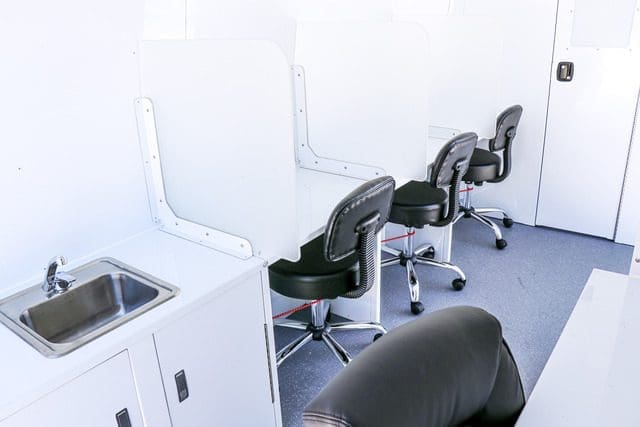
Mobile overdose prevention sites offer many advantages over traditional harm reduction centers. Let’s take a closer look at some of the advantages these versatile vehicles have over fixed harm reduction centers and see why they are so important for helping people with substance use issues.
1. They can move around
Mobile OPS are flexible and are like a portable version of brick-and-mortar harm reduction centers. Unlike fixed harm reduction centers that stay in one place, mobile OPS can go to different areas to get people the help they need, especially those who can’t easily get to a fixed location.
2. Quick help in emergencies
Mobile OPS can respond fast to overdoses. They have trained staff and supplies to help right away, which can save lives while waiting for more help to arrive or until they get to a hospital.
3. Building trust in communities
Because they’re always driving around and offering assistance, the community begins to trust mobile OPS. People eventually feel comfortable asking for help without worrying about being judged.
4. Flexibility in service delivery
Mobile OPS can offer different kinds of help to fit each community’s needs. They can provide education, support, and more, along with their main services to prevent overdoses.
5. Cost-effectiveness
Mobile OPS are cheaper to start and run than fixed centers. They don’t require a new building and this makes them a smart choice for helping with substance use issues.
6. Reducing public nuisance
Mobile OPS can help reduce public issues related to drug use. They offer a safe place for people to get help and dispose of needles properly. This can lessen problems like litter from drug use, sharing needles, and public drug use. As a result, communities will be safer and cleaner while also improving relations between residents and local authorities.
7. Reaching vulnerable populations
Mobile OPS are great at reaching people who have a hard time getting help otherwise. They can go to places where people are struggling, like areas with lots of homeless people or remote locations.
This means everyone can get the support they need, no matter where they live or their situation. With this level of versatility, your organization can reach out to everyone to make sure nobody is left behind when it comes to getting help with substance use.
Overall, mobile OPS have lots of benefits over regular harm reduction centers. They’re flexible, reach more people, help fast in emergencies, build trust in communities, and save money. That’s why they’re so important for helping with substance use problems in our communities.
Over 107,000 people died from an overdose in the U.S. in 2021 alone. If more organizations started using mobile overdose prevention vehicles to help people with substance abuse, the number of lives saved could be much more.
Your next steps with AVAN Mobility
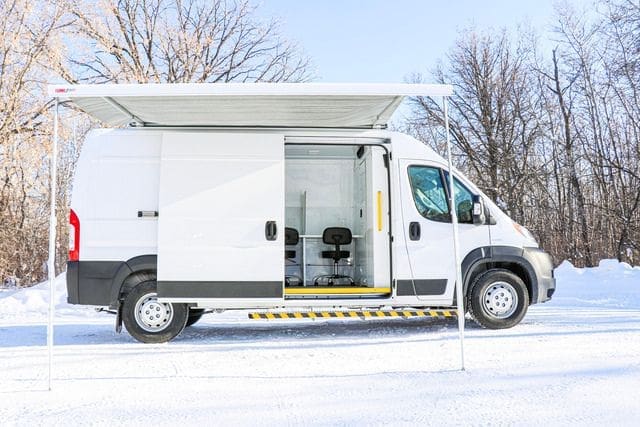
You landed on this article looking for more information on mobile overdose prevention sites and harm reduction centers.
If you’ve made it this far, you now know the life-changing impact of mobile overdose prevention sites and how they have the potential to reach more people than harm reduction centers.
At AVAN Mobility, our Mobile Overdose Prevention Van is being used all over North America to prevent overdoses, improve safe consumption practices, and, ultimately, prevent deaths. If you have any questions related to this van, click the button below to talk to Simon or Russ, our experienced commercial mobility experts, to see how you can get one and start saving lives today.
If you’re not ready to speak to someone about our vehicles yet, take a look at some of the resources below instead. They’ll help you make your decision and determine whether it’s the right fit.


